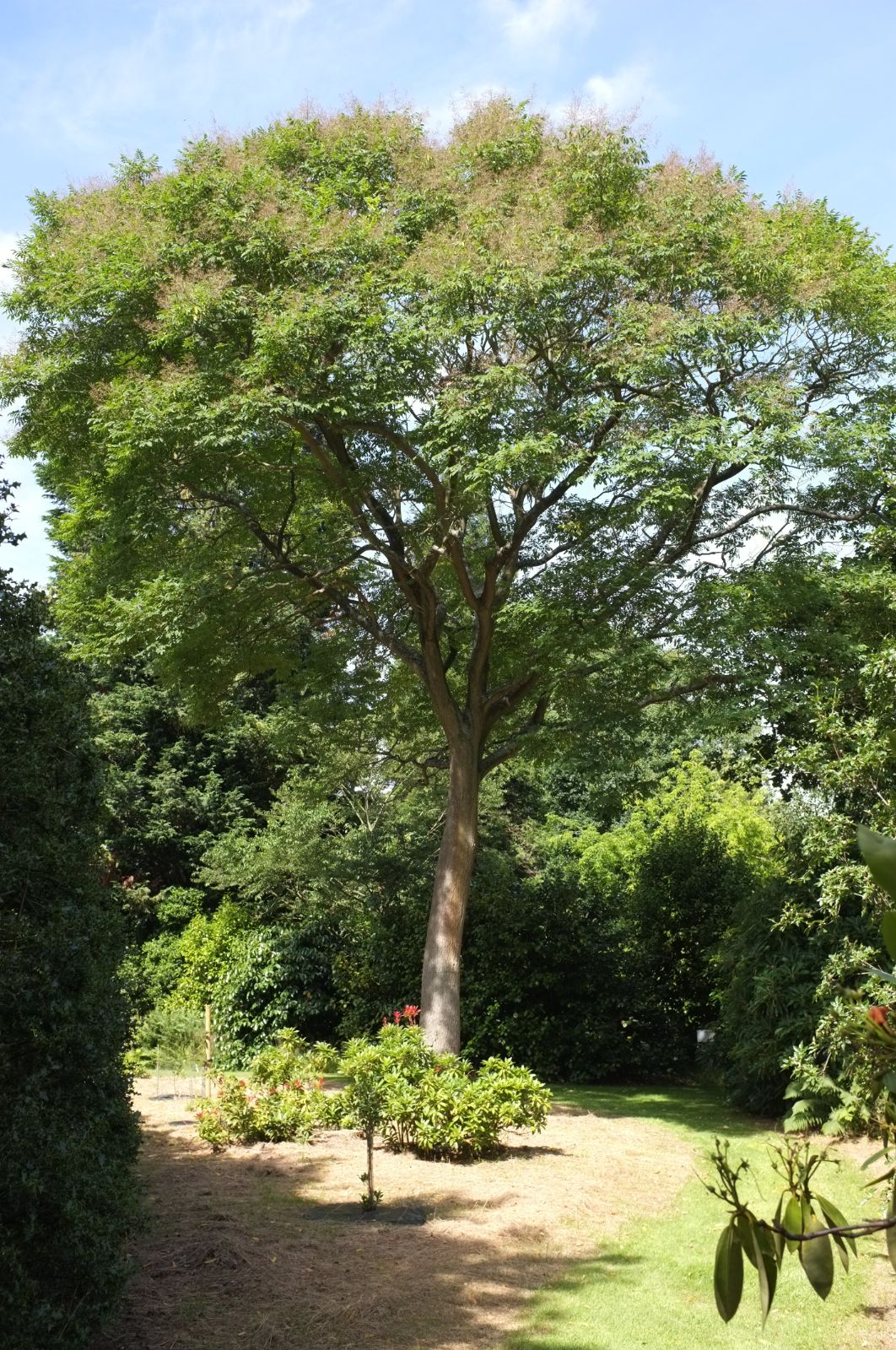Platyosprion
Credits
Owen Johnson (2021)
Recommended citation
Johnson, O. (2021), 'Platyosprion' from the website Trees and Shrubs Online (treesandshrubsonline.
Family
- Fabaceae
A genus of 1–4 species of deciduous tree from east Asia plus, questionably, one woody climber. Bark grey, smooth into maturity with a pattern of round lenticels. Shoots slender; buds short, enclosed through summer within the inflated base of the leaf-stalk. Leaves compound, with 7–13 leaflets including a terminal leaflet, the side leaflets usually arranged alternately along the rachis, which is grooved above. Stipels usually present at the base of each leaflet. Leaflets untoothed, green on both sides. Inflorescence with bracts; flowers fragrant, in terminal paniculate racemes, opening in early summer. Calyx campanulate; teeth 5. Corolla white; petals subequal. Stamens 10, free. Legume compressed, winged along both sides. (Derived from species descriptions in (Flora of China 2021) and (Spongberg & Ma 1997).)
The species in the genus Platyosprion were traditionally included in Cladrastis, but phylogenetic research by Lei Duan et al. (Duan et al. 2020) has shown that the latter genus may be more closely related to Styphnolobium and to Pickeringia than to Platyosprion as now understood. The name – from the classical Greek, ‘winged bean’ – was first published by Maximowicz in 1877 for P. platycarpum. As recently redefined, Platyosprion shares the smooth greyish bark and the remarkable alternate arrangement of its leaflets on their central stalk with Cladrastis, differing in its smaller individual flowers, in the small stipels usually present at the base of each leaflet, and in the winged seed-pod. P. platycarpum, from Japan and eastern China, has a tiny presence in cultivation in the west.
Of the other possible species, Cladrastis chingii was described from Guangxi, Hunan, Yunnan, and Zhejiang in China by Duley and Vincent (Duley & Vincent 2003) with branched stipels; it is regarded as a good species by the Flora of China (Flora of China 2021) but not by Duan et al. (2020), so the combination in Platyosprion has not yet been made. Other published species, still in Cladrastis, and which Duan et al. also consider synonymous with P. platycarpum, are C. yungchunii Li & Fan, described from China in 1994 and differing from P. platycarpum in the absence of stipels, C. parvifolia C.Y. Ma (tentatively accepted by the Flora of China and described as a smaller-leaved tree from Guangxi), and C. scandens C.Y. Ma (tentatively accepted by the Flora of China and described as a woody climber from Guizhou). Here we adopt the treatment of Duan et al. (2020) and treat all these names as synonyms of P. platycarpum.
Like Cladrastis, Platyosprion lacks the nodules of nitrogen-fixing bacteria in their roots which enable most plants from the bean family to grow in nutrient-poor soils (Foster, Horner & Graves 1998), but the genus tolerates lime in the soil.

